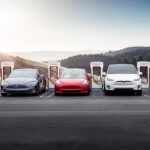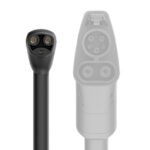The number of EV charging ports (made up of individual charging points or stalls both public and private) in the United States nearly doubled between the fourth quarter of 2019 and the first quarter of 2023 – from 87,352 to 161,562, according to National Renewable Energy Laboratory data.
That number includes all types of charging points (both AC and DC) regardless of their power level, availability (public and private), or charging connector standard.
If we exclude private charging ports –workplace, commercial, and fleet charging that is not open to the public – the total number available in the US is above 140,000, or about 88% of the total number. This EV charging infrastructure is supplementing millions of home charging units to enable long-distance travel or support those without access to home charging.
Growth in the number of public charging ports was reported every single quarter during the same period, usually by a few percent (or several thousand units) quarter-over-quarter.

Number of EV charging ports by access type. Photo credit: DOE Vehicle Technologies Office)
What is especially interesting is the share of DC fast chargers in the public infrastructure. As of Q1 2023, it’s estimated that DC fast-charging ports accounted for 21.5% of public charging ports (or more than 30,000). That’s just the number of ports, so the number of chargers is lower (since some have more than one port).
This leaves about 110,000 ports for AC charging points at almost entirely Level 2, from a few kilowatts up to 19.2 kilowatts.
The power output of DC charging ports varies significantly – from as low as 20 kilowatts up to 350 kilowatts – and there are three different charging connectors (CCS1, Tesla’s NACS, and the outgoing CHAdeMO) that are generally available.
Installations of DC fast-charging infrastructure progress faster than AC charging infrastructure, so the DC share is gradually increasing as time goes on.

Number of Public EV Charging Ports by Level (credit: DOE Vehicle Technologies Office)
One of the most interesting things that the data shows is the power output of public DC fast charging points, which appears to be quickly increasing.
As of the first quarter of 2023, nearly half of all DC charging ports were 250 kW or higher. This is also the fastest-growing segment of DC fast chargers, compared to the essentially stalled segment of chargers below 51 kW.

Quarterly Growth Of Public DC Fast Evse Ports By Power Output (credit: National Renewable Energy Laboratory data)








0 Comments